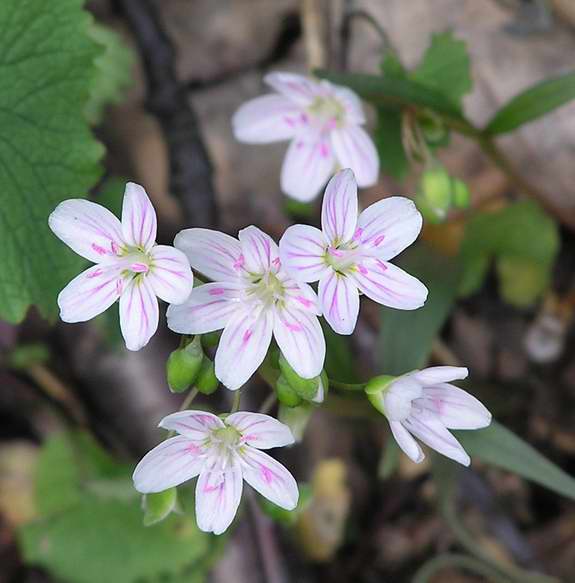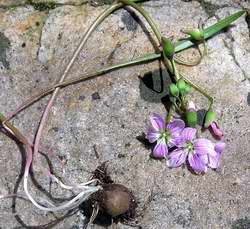|
Common
Name: Spring Beauty Scientific Name: Claytonia virginica This striking pink or white flower with dark pink stripes extending along the longitudinal axis of each petal is one of the first blooms of early spring. Potpourri: The genus name Claytonia is derived from John Clayton (1686-1773), an English naturalist who immigrated to Virginia in the early 1700's. He developed a list of native Virginia plants that was used by John Gronovius, a financial backer of Linnaeus, as source material for the two-volume "Flora Virginica," the first book to use the Linnaean system of classification. Linnaeus named Spring Beauty in Clayton's honor.
The Spring Beauty root structure includes round, perennial tubers called corms, which were eaten by Native Americans and later by the early colonists. They are said to taste like radishes when raw and like potatoes or roasted chestnuts when boiled or baked. The corms are so small, however, that they were called "fairy spuds" by settlers. The Spring Beauty is of special interest to botanists because it has an unstable number of chromosomes; unlike most other living things (humans have forty-six). This plant has as many as fifty different chromosomal combinations. In Chippewa legend, Seegwun, the Spirit of Spring replaces Peboan, the Spirit of Winter, who sinks down and dissolves into rivulets of water, where the Spring Beauty emerge. |

